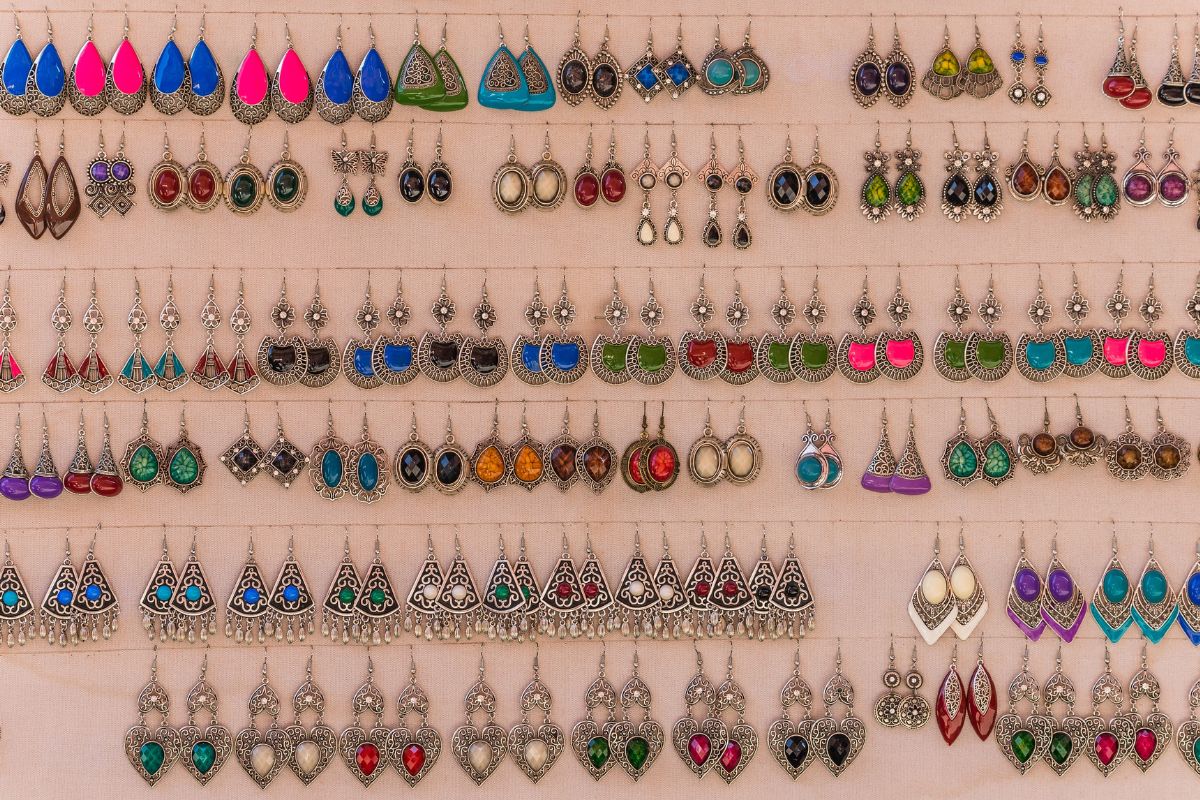Morocco, with its rich cultural tapestry and diverse heritage, is a land where traditions and craftsmanship have thrived for centuries. Among its many art forms, Moroccan jewelry stands out as a testament to the country’s history, craftsmanship, and the deep symbolism that is woven into every piece. In this article, we will take a journey through the world of Moroccan jewelry, exploring its history, significance, and the stories behind these exquisite adornments.
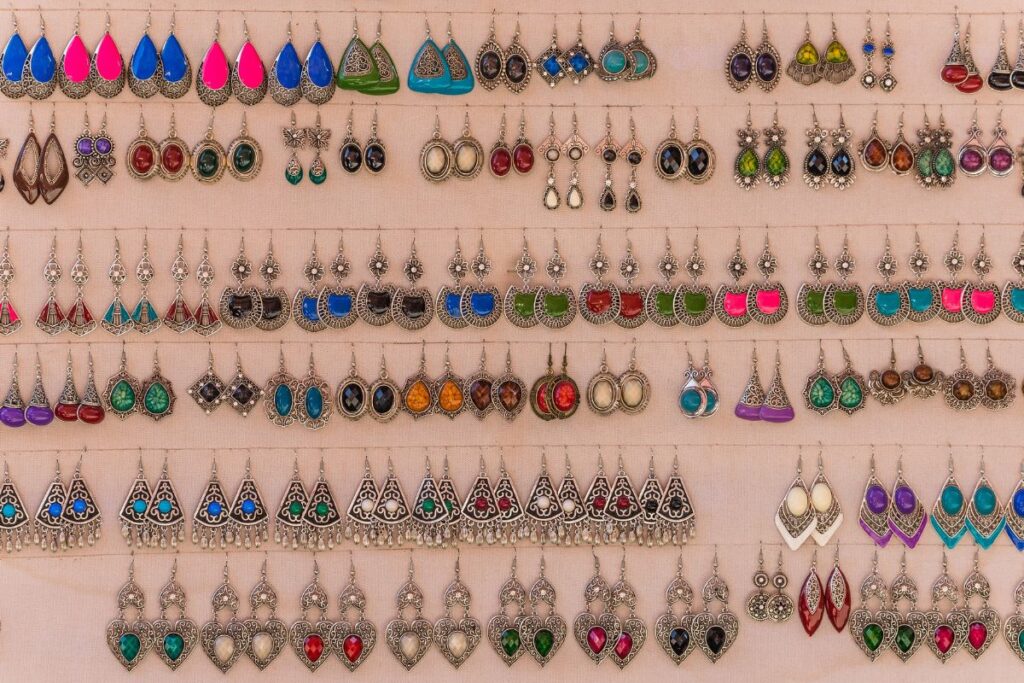
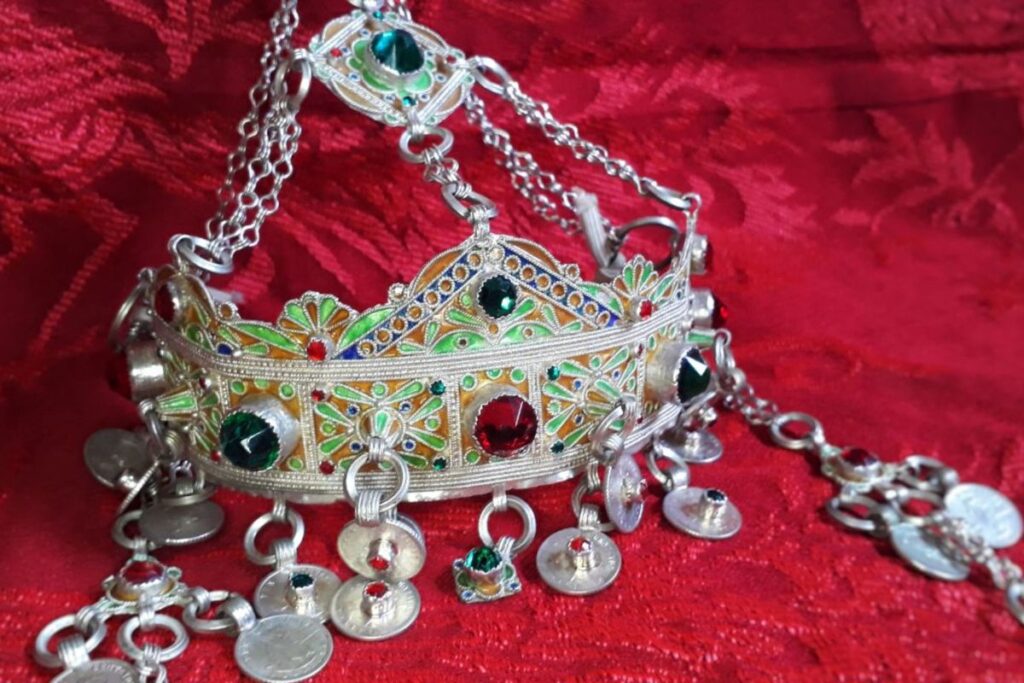
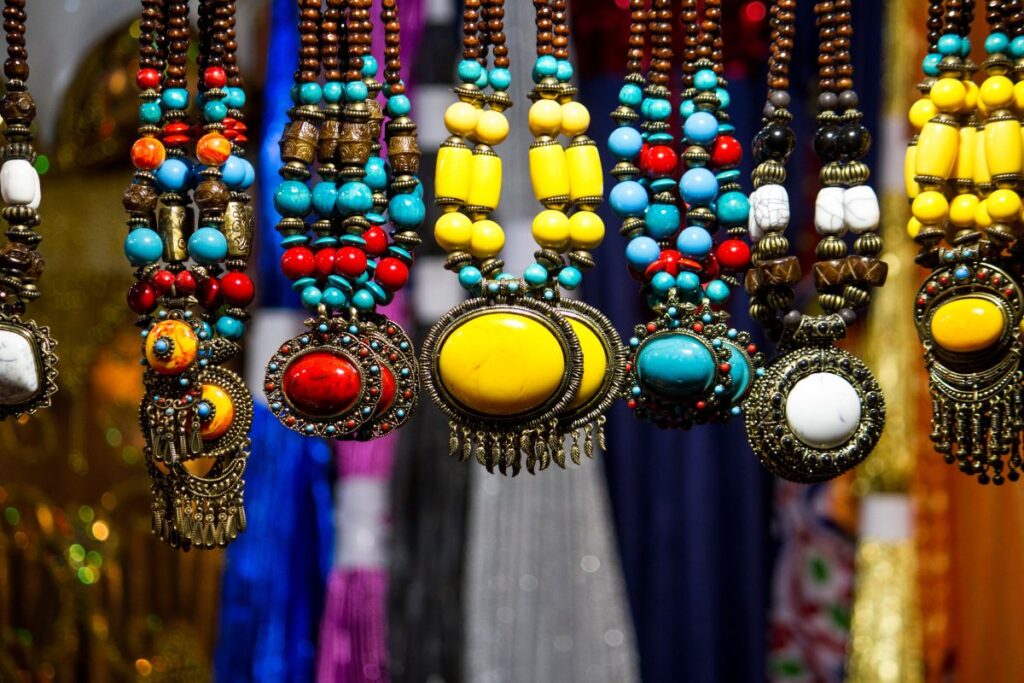
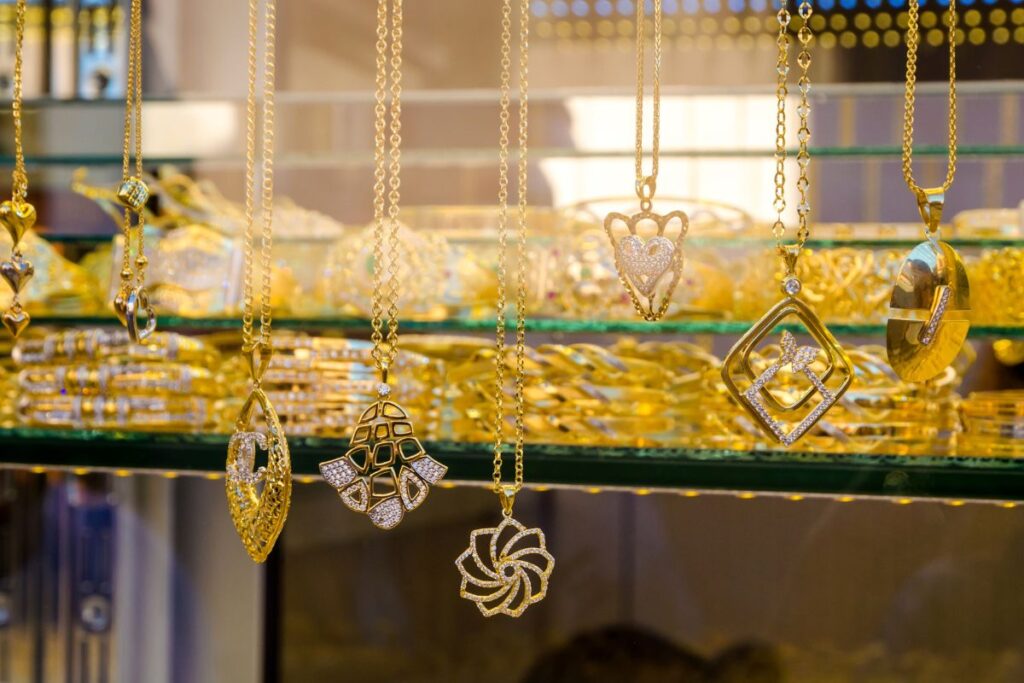
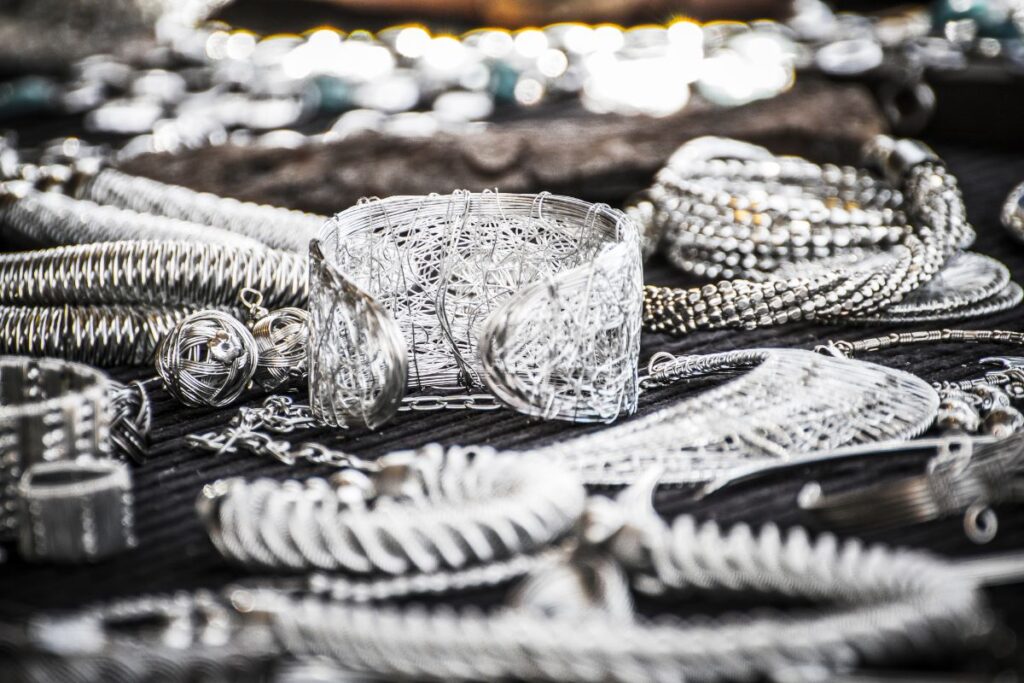
A Glimpse into Morocco’s Jewelry Heritage
Jewelry holds a special place in Moroccan culture. It is not merely ornamental but also serves as a symbol of identity, status, and tradition. Moroccan jewelry has a history that dates back to ancient times, influenced by various civilizations, including the Berbers, Arabs, Andalusians, and even the Romans.
The craft of jewelry-making in Morocco has been passed down through generations, with techniques and designs being carefully preserved and adapted over time. Each region of Morocco has its own distinct jewelry styles, reflecting the unique culture and traditions of its people.
The Artisans Behind the Beauty
Moroccan jewelry is a labor of love crafted by skilled artisans known as “ferrak” or “maâlems.” These master craftsmen have honed their skills over years of apprenticeship, learning the intricate techniques and secrets of the trade. They work with a variety of materials, including silver, gold, semi-precious stones, and enamel.
Many jewelry-making processes are still done by hand, using traditional tools and methods. From shaping metal to setting stones, the artisans pour their expertise and passion into each piece, creating works of art that captivate the eye and the heart.
Symbolism and Significance
Moroccan jewelry is rich in symbolism, and each piece tells a unique story. Here are some common motifs and their meanings found in Moroccan jewelry:
- Hand of Fatima (Khamsa): This is a protective symbol representing the hand of the daughter of the Prophet Muhammad, Fatima. It is believed to ward off evil and bring good luck.
- Fish: A symbol of fertility and protection, the fish motif is often used in wedding jewelry to bless the newlyweds with prosperity and children.
- Berber Fibula: This intricate pin, often worn as part of traditional Berber dress, signifies a woman’s marital status, with different designs indicating whether she is single, married, or a widow.
- Star: Stars are a symbol of protection and guidance, often seen in Moroccan jewelry to provide wearers with a sense of direction and safety.
- Eye: The “Nazar” or evil eye is a protective symbol used to ward off negative energy and protect the wearer from harm.
- Coins: Coins are frequently incorporated into jewelry to represent wealth, prosperity, and good fortune.
Types of Moroccan Jewelry
Moroccan jewelry encompasses a wide range of styles and types, each with its own unique characteristics. Some of the most notable include:
- Amazigh Jewelry: Worn by the indigenous Berber people, Amazigh jewelry features bold, geometric designs and often incorporates amber and coral beads.
- Tiznit Silver Jewelry: Named after the town of Tiznit in southern Morocco, this style of jewelry is known for its intricate silver filigree work, often used to create cuffs, earrings, and necklaces.
- Enamel Jewelry: Enamel work is a hallmark of Moroccan jewelry, with vibrant colors and intricate patterns applied to metal surfaces, creating stunning visual effects.
- Wedding Jewelry: Morocco’s weddings are a lavish affair, and wedding jewelry is no exception. Elaborate gold and silver jewelry, often adorned with gemstones, is worn by brides to symbolize their new life.
- Tuareg Jewelry: Worn by the nomadic Tuareg people, this jewelry is known for its distinctive silver crosses, camel motifs, and blue stones that symbolize the desert sky.
The Role of Moroccan Jewelry Today
While Moroccan jewelry continues to hold deep cultural significance, it has also found its place in the modern world. Contemporary Moroccan jewelers draw inspiration from traditional designs, infusing them with modern aesthetics and creating pieces that appeal to a global audience.
Moroccan jewelry has gained popularity in international fashion and design circles, with celebrities and fashionistas incorporating Moroccan pieces into their wardrobes. Additionally, tourists visiting Morocco often seek out these exquisite adornments as souvenirs of their travels.
Preserving Morocco’s Jewelry Heritage
Efforts are being made to preserve and promote Morocco’s rich jewelry heritage. Artisans are passing down their skills to younger generations to ensure that the art of jewelry making continues to thrive. Additionally, museums and cultural institutions in Morocco and around the world showcase Moroccan jewelry as an integral part of the country’s cultural heritage.
Moroccan jewelry is more than just beautiful adornments; it is a reflection of the country’s history, culture, and symbolism. Each piece tells a story, and the intricate craftsmanship behind them is a testament to the skill and dedication of Moroccan artisans.
Whether worn by a bride on her wedding day, passed down through generations as a family heirloom, or cherished as a souvenir of a journey to Morocco, these adornments continue to hold a special place in the hearts and minds of those who appreciate the artistry and cultural significance of Moroccan jewelry.
Secure Your Adventure: Book Now for the Ultimate Moroccan Tour!
Book now and start the best tour with us! Discover the wonders of Morocco with our expertly crafted itineraries, tailored to provide an unforgettable experience. From breathtaking landscapes to rich cultural heritage, our tours offer the perfect blend of adventure and relaxation. Don’t wait – secure your spot today and embark on the journey of a lifetime!
